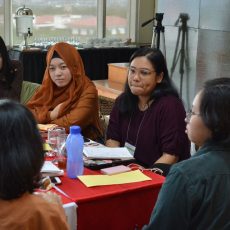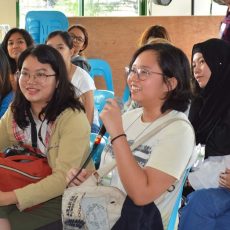Written by: Chito Chavez, Manila Bulletin
Survivors of the disastrous tropical storm “Ondoy” in 2009, where 4.9 Filipinos were affected, still feel the pain and horror 10 years after the tragedy and are in dire need of post-disaster counseling, a women’s group said Thursday.

“Tears still flow when survivors recall what happened to them 10 years ago, when Ondoy devastated the Philippines in September, 2009, affecting 4.9 million Filipinos,’’ executive director Jojo Guan of the Quezon City-based Center for Women’s Resources (CWR) said.
Guan noted the disaster-affected communities in Marikina still “show worrying signs in the re-telling of their experiences, indicating the need for post-disaster counseling.”
“It has been a decade since Ondoy hit the country, yet you’d still feel the pain and horror of Ondoy survivors when they re-tell their experiences,” said Guan.
Guan said both local government units and national government agencies should “realize the need for long-term monitoring of health status in disaster-affected communities with a focus on psychosocial well-being.”
She reminded the government that “trauma” is something they should take seriously, saying the hidden wounds from the disaster that occurred a decade ago remains as “painful as those that are visible.”
READ MORE: A decade after ‘Ondoy,’ Marikina resilient as ever
Recalling the horrors
CWR’s call for post-disaster counseling was prompted by the visit last August of the staff and the participants of #HerStoryOurStory: Digital Storytelling on Women and Environment Training, a project of the CWR in partnership with Internews and Earth Journalism Network, in two Marikina barangays that were affected by Ondoy. Women residents who survived re-told the horrors of Ondoy.
A resident of Barangay Malanday recalled how she and her newly born child had to transfer from one roof to another, using a thin piece of coco lumber as a bridge.
“Nanginginig ako pero naisip ko na lang na kailangan kong makalipat sa mas mataas na lugar para sa aking anak (I was shivering, but the mere thought of my child gave be the willpower to transfer to a safer place),” she said.
Some barangay residents recalled that relief and services did not come at once.
“They relied on each other for survival and care. One mother in Barangay Malanday, who had a sari-sari store and had accommodated a hundred individuals in her house, gave away all her goodies so that everyone would have something to eat for two days,” CWR noted.
Need for long-term solution
Guan has cited the lack of a long-term solution to a country regularly struck by at least 20 typhoons a year.
“We are a disaster-prone country, yet the national government is often caught off guard by disasters. So, how can we expect it to provide psychosocial services, when it can’t even provide adequate and rapid disaster response services like evacuation, relief, and rehabilitation?” Guan asked.
After Ondoy ravaged the National Capital Region and 30 percent of Philippine provinces, the CWR noted typhoons “Pablo,” “Sendong,” and “Yolanda” hit the country a few years later.
With these disasters, the CWR noted “millions of Filipinos were affected, leaving hundreds dead, injured, and missing’’.
“The national government can look into the efforts of the Marikina local government on how it has learned its lesson after Ondoy,” Guan added.
“The most significant action every time there is disaster is the community support especially for the crucial 48 hours. Thus, the people should make use of collective action and demand efficiency from the government when it comes to providing services, especially during disasters,” Guan concluded.
Published: https://news.mb.com.ph/2019/09/26/horrors-of-ondoy-still-haunting-survivors/


